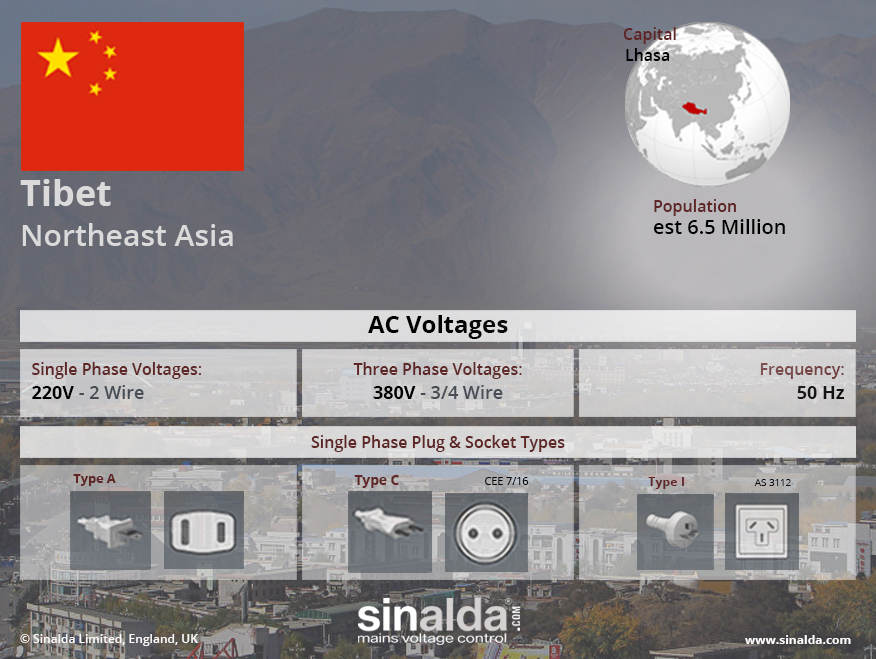Last Updated: 01 November 2021

Copyright 2021 Sinalda. Permission to use this image is granted subject to appropriate credit being given to www.sinalda.com as the source.
Power Quality in Tibet
Tibet is a region in China, and as such, the electricity supply network is managed by the Chinese government. The state of the electricity supply network in Tibet has improved significantly in recent years thanks to significant investments in infrastructure and renewable energy sources.
Power Sector in Tibet
Tibet’s electricity supply network is largely based on hydropower, which has the potential to be highly reliable and sustainable. The region has abundant water resources, and the Chinese government has invested heavily in building large-scale hydropower projects to generate electricity. In 2020, hydropower accounted for around 94% of Tibet’s total electricity generation, with the remaining 6% coming from wind and solar power.
Despite the significant investments in infrastructure, there are still some challenges to overcome in ensuring a reliable electricity supply network in Tibet. One of the biggest challenges is the region’s remote location and rugged terrain, which can make it difficult to build and maintain infrastructure. Additionally, extreme weather conditions, such as heavy snow and ice, can also cause disruptions to the electricity supply network.
To address these challenges, the Chinese government has implemented several initiatives to improve the reliability of Tibet’s electricity supply network. One such initiative is the construction of high-voltage transmission lines to connect Tibet with other regions of China, which has helped to ensure a stable supply of electricity even during times of high demand or extreme weather conditions. The government has also invested in energy storage technologies, such as battery systems, to help stabilize the grid and ensure a steady electricity supply.
Regarding reliability, Tibet’s electricity supply network has made significant progress in recent years, with an overall increase in the availability of electricity and a decrease in the frequency and duration of power outages. According to a report by the State Grid Tibet Electric Power Company, the average power outage time in Tibet in 2020 was 5.5 minutes, which is significantly lower than the national average of 14.9 minutes.
Conclusion
In conclusion, while there are still some challenges to overcome, the state of the electricity supply network in Tibet has improved significantly in recent years, thanks to the Chinese government’s investments in infrastructure and renewable energy sources. With ongoing initiatives aimed at improving reliability and stability, the future of Tibet’s electricity supply network looks promising.
Share your Views and Experiences
Every reasonable effort is made to ensure that the information provided above is accurate. No guarantees for the accuracy of the information is made.
So we are able to keep the content updated, and actual on the ground experiences can be shared with others, please feel free to contact us.







